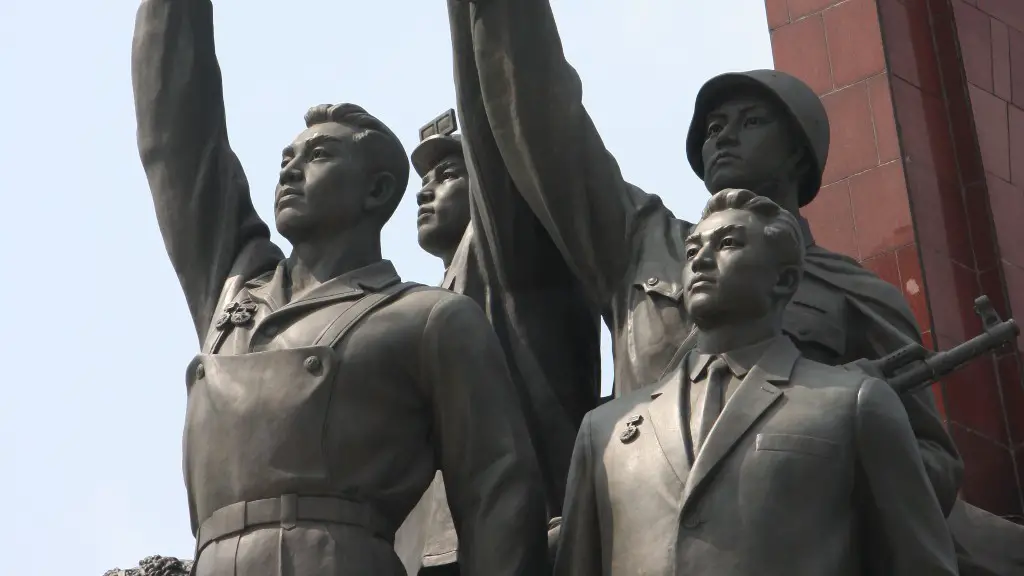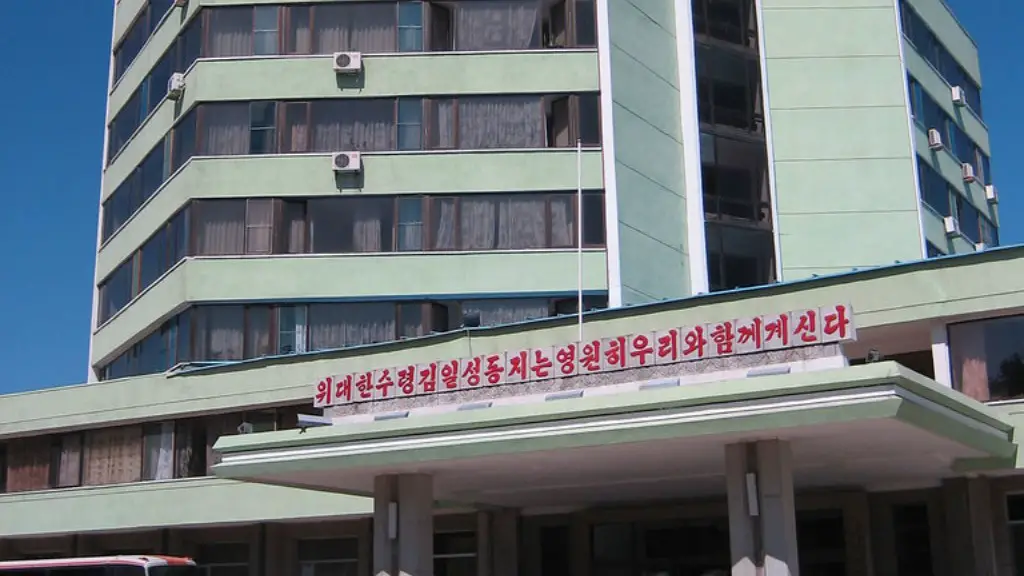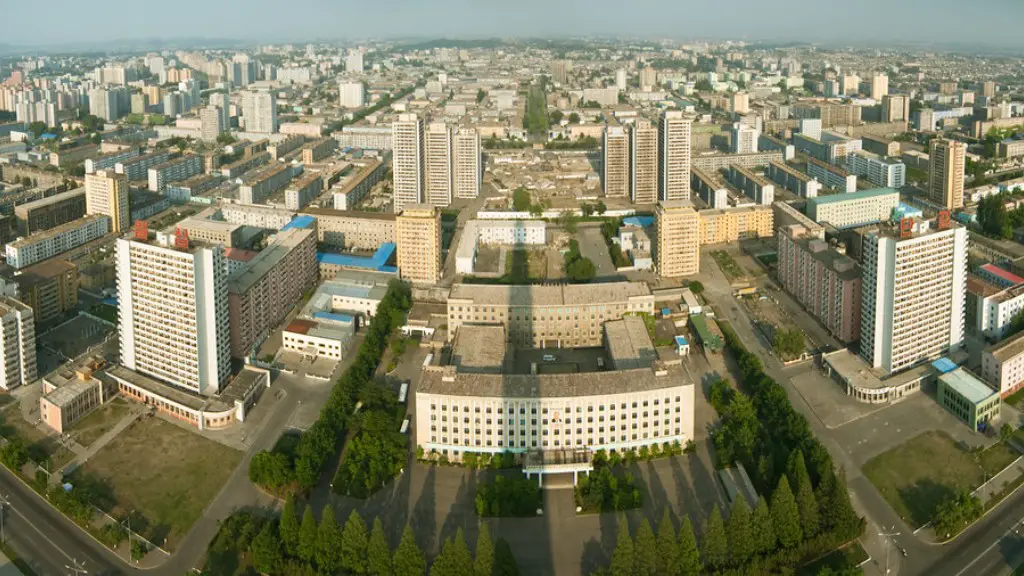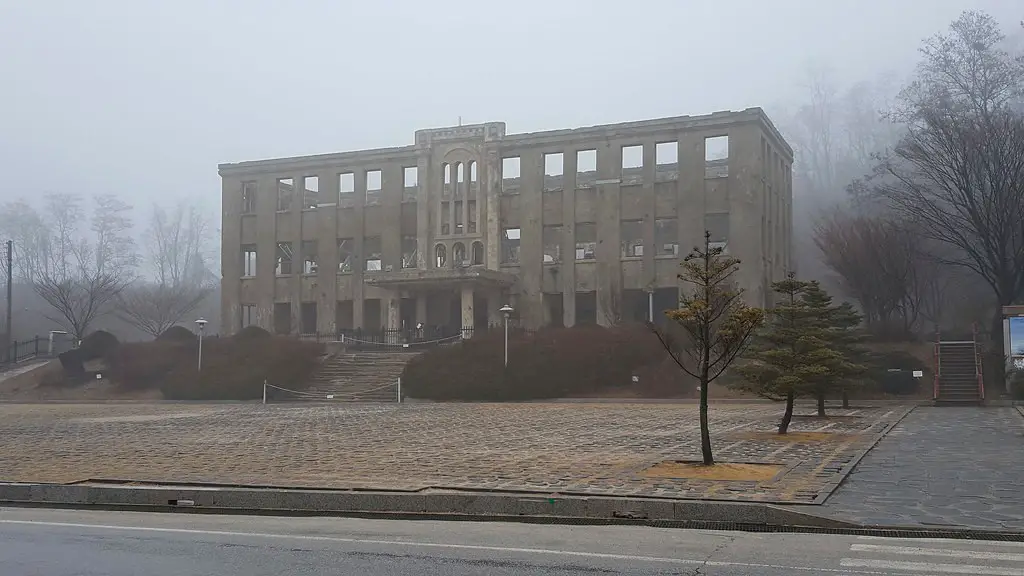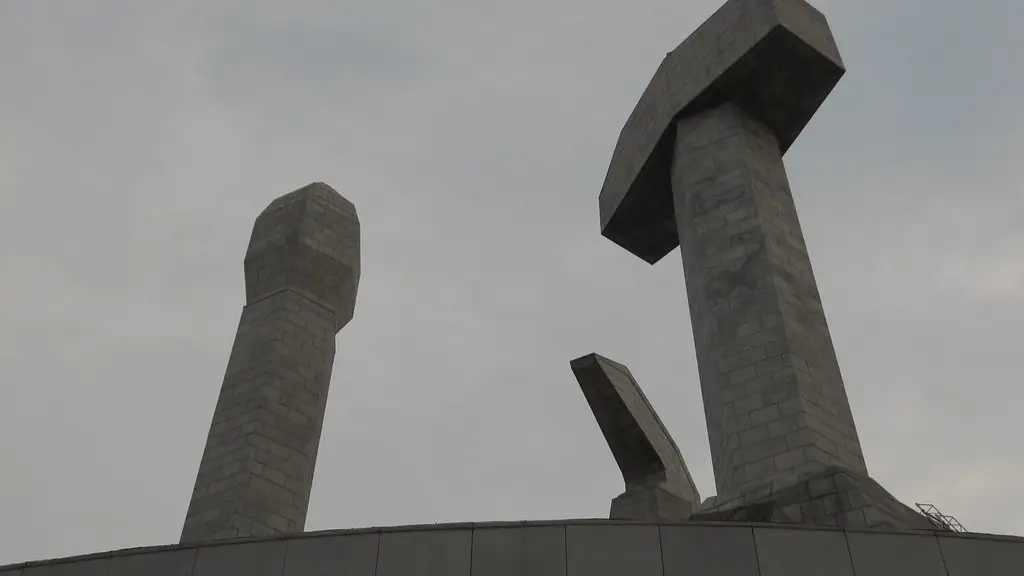South Korea and North Korea have been divided by a famous historical demarcation line, the 38th parallel, since 1945. Immediately after the Japanese colonization of Korea ended in 1945, the US and Soviet Union divided the nation into two separate countries, each neighbor vying for control over the peninsula. After decades of normalization efforts, the two countries are still technically at war, in a stalemate that has become known as the “Cold War” between the two.
The Korean War started in 1950 when North Korean forces crossed the 38th parallel, the Korean demilitarized zone (DMZ), and invaded South Korea. The UN Security Council mandated UN troops, mostly from the US, to help South Korea during the Korean War, which lasted two years and ended in an armistice. This armistice stipulated that the two Koreas remain separate and that no aggressive acts would be taken against each other. However, the armistice was never signed, and both sides have since had an uneasy rivalry, occasionally flaring into open aggression.
There have been numerous attempts at reconciliation between North and South Korea over the years since the Korean War. These include the creation of the Joint Security Area in the demilitarized zone (DMZ) between North and South Korea and the establishment of a mutual military hotline. In 2018, South Korea and North Korea held a landmark summit in Pyongchang, in which the two leaders had a really positive meeting. Unfortunately, the talks have since faltered, and South and North Korea remain in a state of military tension.
The relationship between North and South Korea has been complicated ever since the end of the Korean War. While both sides of the peninsula remain technically at war, there has been a certain degree of détente and cooperation between them. For example, a number of joint economic projects have taken place. In addition, several North and South Korean athletes competed together in the 2018 Olympic Games in Pyeongchang. Yet, as quickly as there have been signs of hope, they have also been signs of growing tension.
North Korea has acted aggressively in recent years, firing off ballistic missiles and testing nuclear weapons. In response, South Korea has increased its military presence along the inter-Korean border to deter any further attacks. Moreover, the US has sent forces to the Korean peninsula to protect its ally. As the two Koreas remain divided and tensions remain high, the animosity between them remains a constant source of worry for the region.
The Impact of Tensions on the Koreas
The uneasy rivalry between North and South Korea has had a significant impact on the two states and their people. For the last several decades, North and South Korea have each been spending more on military defense than their respective economies. The large military expenditure has left the North and the South without the resources to fund other important social services, such as health care and education.
In addition, the high levels of military tension have had an impact on the people, as they are constantly living in fear of a potential attack. This fear has been further exacerbated by North Korea’s consistent threats of war and its testing of nuclear weapons. North Koreans have also been subject to severe travel restrictions, leaving them unable to visit the South to meet friends and family.
The constant strain between the two Koreas has also hindered their ability to cooperate in various areas, from sports to business and commerce. For example, businesses in South Korea have been encouraged to invest in North Korea, however, due to the ongoing tensions, most South Korean businesses are feeling hesitant to invest in the North, which has led to a lack of economic growth in the region.
Efforts for Reconciliation
Despite the political rivalry and military tensions between the Koreas, efforts are being made to normalize the relations between them. In 2018, Moon Jae-in, the President of South Korea, held a historic meeting with Kim Jong-un, the leader of North Korea. The encounter was seen as a crucial step towards finding a peaceful resolution to the long-standing conflict.
In addition, there have been various initiatives aimed at encouraging greater economic, political and cultural relations between the two Koreas. For instance, the joint business projects in the Kaesong Industrial Complex and the economic and sports exchanges carried out in the DMZ are just a few initiatives that have been implemented.
Furthermore, in late 2018, North and South Korea signed a joint declaration, in which they agreed to increase cooperation and work towards the eventual reunification of the Korean peninsula. The declaration has been widely welcomed and seen as a symbolic step forward in improving the relations between the two Koreas.
U.S. Involvement
The US has been a major actor in the Korean situation since the end of WWII. The US has been both a force for peace and a major contributor to the North-South tensions. Over the years, the US has provided South Korea with military and economic support, in order to deter any possible North Korean aggression.
Recently, the US has carried out several military tests in the region, including deploying a nuclear-powered aircraft carrier strike group to the Korean peninsula. These show of military force by the US has further fuelled tensions between the two countries. At the same time, the US has also pushed for the dismissal of economic sanctions against North Korea, in order to encourage peace talks.
The involvement of the US has created further diplomatic difficulties between North and South Korea, and has made it more challenging for the two nations to reach an agreement. However, the US has recently shown a willingness to deescalate tensions and initiate talks between North and South Korea.
Building Bridges
The appointment of North Korea’s external liaison, Kim Yo-jong, in 2018, was seen as a major step forward in improving North-South relations. Kim has since taken part in meetings with South Korean officials, and has even pushed for improved relations with the South. In addition, Moon Jae-in, the South Korean President, has also pledged to build upon the existing rapport between the two Koreas.
The two Koreas have also shown a willingness to build bridges between their respective societies. For example, a number of North and South Koreans have been allowed to travel between their countries for the purpose of promoting cross-cultural understanding. The two Koreas have also agreed to re-establish a regular train service between the two countries, with the aim of improving the connections between them.
Both Koreas have also agreed to work towards the reunification of the Korean peninsula, and have opened up channels of dialogue to make this process smoother. In addition, both sides have pledged to work towards reducing military tensions in the region. These initiatives have raised hopes that the two Koreas may eventually be able to resolve their differences and establish lasting peace.
Fostering Dialogue
The Koreas have made some significant advances in establishing a more peaceful relationship over the past few years. However, there is still a long way to go before the two countries can be fully reunited. One of the main challenges faced is maintaining the current dialogue between the two sides, which has deteriorated at times due to passing political events.
In addition, there is still a large degree of mistrust between the two states and their respective societies. This mistrust has been caused by years of misinformation and propaganda, which has made it difficult for the Koreas to find a middle ground to build upon. Therefore, maintaining communication and fostering trust will be essential to ensure that any progress made is maintained.
The leadership of the two Koreas will be under pressure to demonstrate their commitment to a lasting peace. This means that both sides must adhere to any agreements made and must take steps to restore trust and improve relations between their people. Moreover, both sides must put aside their ideological differences in order to build a lasting peace.
Non Strikezone
In an effort to reduce the military tensions and de-escalate the conflict between North and South Korea, a number of initiatives have been implemented. One of these is the establishment of a non-strikezone (NSZ), which is a designated area between the two Koreas that is off limits to both sides in terms of military activity. This NSZ will prevent North and South Korea from engaging in military activities that could exacerbate the conflict or lead to war.
The non-strikezone has been welcomed by both sides, as it will help to reduce tensions and encourage engagement in areas other than warfare. In addition, the NSZ provides a platform for discussions and negotiations to take place, as both sides can feel assured that no hostile action will occur while engaged in dialogue. The NSZ also serves as a physical reminder of the need for cooperation between North and South Korea, and may be a key step in overcoming hostilities.
The Role of China and Japan
The situation between North and South Korea has the potential to affect the entire region. As such, China and Japan, two of the countries surrounding the Korean Peninsula, have taken an active role in improving relations between the two Koreas.
Both China and Japan have encouraged dialogue between the two Koreas, and are also pushing for the removal of economic and financial sanctions placed on North Korea. China has also played an important role in mediating talks between North and South Korea. China recently held a summit between the two countries, and is pushing for the two Koreas to take steps towards reconciliation.
Japan has also been outspoken in its support for the North and South Korea finding a resolution to their conflict. Japan has provided funds and other resources to South Korea to help bring an end to the conflict. In addition, Japan has also hosted diplomatic talks and conducted negotiations with North Korean officials in order to foster better relations between the two states.
Conclusion
Though North and South Korea have been enemies since the end of WWII, recent efforts have been made to reunite the two sides. Both Koreas have engaged in diplomatic talks and have agreed to cooperate in various areas. At the same time, the US, China, and Japan have been pushing for a peaceful resolution to the Korean situation. Though the two countries still remain under military tension, with the right conditions, South and North Korea could soon be on the path to reunifying the Korean peninsula.
